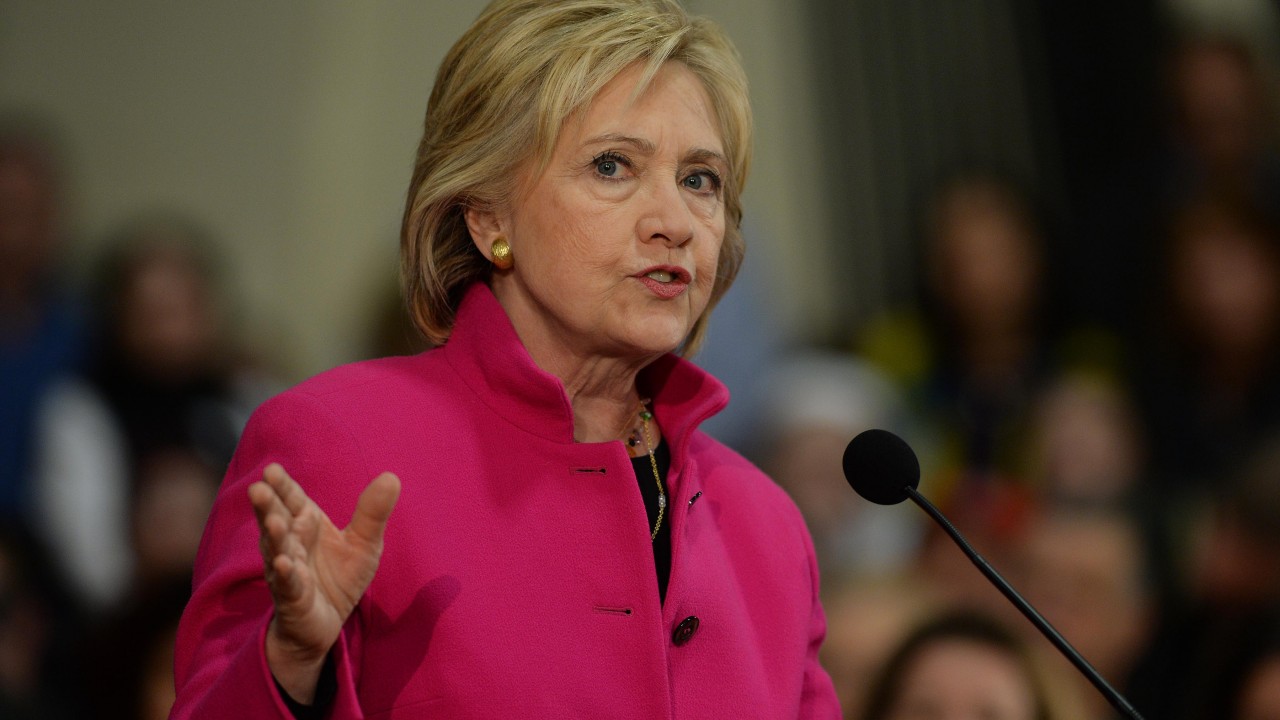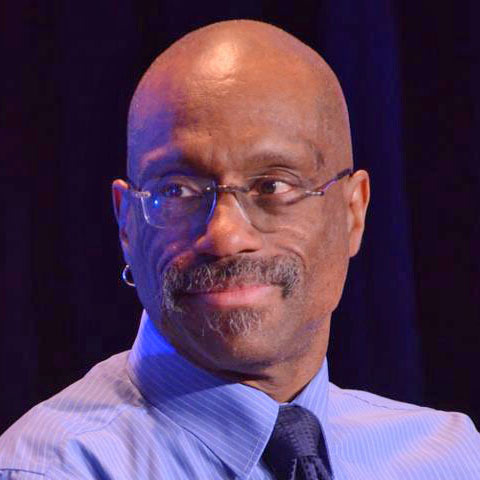
Democratic president candidate Hillary Clinton speaks at a town hall event in Salem, New Hampshire. (Photo by Darren McCollester/Getty Images)
This post originally appeared at OurFuture.org.
Hillary Clinton’s op-ed in The New York Times Monday on how she would handle Wall Street and financial reform as president appears so far to have landed with a thud.
There is little evidence that it has sparked the kind of political debate that would be warranted by a major plan for financial reform. That’s unlikely to have been by design — no one sends an opinion piece to The New York Times with the hope that it disappears into the background.
What is more likely is that the relatively low level of discussion it has sparked reflects how little it adds to what she has already said about how she would handle the financial sector and how incremental some of its proposals are upon close inspection.
It is clear that Clinton wanted to rebut criticisms from progressives that she won’t get tough on the financial sector because she is too beholden to its campaign cash and to the Wall Street executives who have worked with and for the Clinton political dynasty over the years. (Not to mention her flub in the last Democratic debate invoking 9/11 and rebuilding Wall Street in response to the campaign finance criticism.)
— Richard Eskow
To be fair, Clinton’s positions are generally pointed in the right direction and she said much that needed to be said. Hence, a key section of her op-ed addressing the efforts by congressional Republicans use the budget process to derail important financial regulations and weaken the Consumer Financial Protection Bureau, the signature achievement of the Dodd-Frank financial reform bill, was immediately saluted by Sen. Elizabeth Warren. “Whether it’s attacking the CFPB, undermining new rules to rein in unscrupulous retirement advisers or rolling back any part of the hard-fought progress we’ve made on financial reform, she and I agree: ‘President Obama and congressional Democrats should do everything they can to stop these efforts,'” she wrote on her Facebook page.
But careful students of both Warren and Clinton would recognize that the agreement does not go too far from there. In her op-ed, for example, Clinton continues to press her opposition to reinstating the Glass-Steagall Act that separated commercial banking from high-risk financial speculation until the 1990s, a measure that Warren supports. Clinton repeats the same claim she made in the November Democratic debate: Since many of the firms that were major contributors to the 2008 financial crisis, like AIG and Lehman Brothers, weren’t banks, having a Glass-Steagall wall would not have solved the problem.
Richard Eskow not only punctured that argument in his “Five Reasons Glass-Steagall Matters” — “the 2008 financial crisis became a systemic threat specifically because too-big-to-fail banks were underwriting the risky bets these companies made” — but also outlined how the repeal of Glass-Steagall made the banking sector worse even outside of the financial crisis.
Without a Glass-Steagall wall that would insulate the vital retail banking services the economy depends on from Wall Street’s speculative casino, Clinton proposes a “risk fee” on large banks to “discourage the kind of hazardous behavior that could induce another crisis.” The fee would be higher on financial firms that have larger amounts of debt or engage in riskier trading strategies.
It is true that such a fee would help counter the advantage too-big-to-fail banks have over their smaller competitors and offset the “privatize-the-reward-socialize-the-risk” effects of too-big-to-fail bank behavior. But there is a risk that this could well turn into a Rube Goldberg regulatory maze, ripe for gamesmanship. Cue the lawyers and financial engineers who will come up with ways to stay one step ahead of Congress and the regulators on this one.
Of course, Clinton is right to point out the need to better regulate the “shadow banking” sector that would not be directly affected by a Glass-Steagall wall. But this should not have to be an either-or proposition. Without a restoration of Glass-Steagall, the country is likely to find itself caught again with a “too-big-to-fail” institution that gets away with its financial recklessness.
Likewise, Clinton comes out in favor of “a tax on harmful high-frequency trading.” That sounds like a financial transactions tax, but it isn’t. A financial transactions tax of the find advanced by Bernie Sanders and the Congressional Progressive Caucus would apply broadly to all trades, but would have the most impact on high-speed day trading, thus serving as a disincentive to computerized stock churning based on microscopic price changes over split seconds of time. A financial transactions tax does not depend on a definition of “harmful high-frequency trading” that could be gamed by the traders being targeted.
It is welcome to hear Clinton declare once again that “no one should be too big to jail” and that corporations should admit to their misdeeds and pay fines high enough that they can’t be dismissed as acceptable costs of doing business. Actually seeing this in practice would be a big deal, indeed. But here’s a reality check: Forcing businesses to admit wrongdoing and extracting penalties that really sting means having the firepower to match Wall Street’s legal arsenal and the willingness to use it. Milquetoast settlements happen because both sides want to avoid the cost of a protracted court case. Clinton has yet to spell out how she would equip her Justice Department with the resources to pursue well-heeled Wall Street defendants all the way through the court system to a jury verdict and the inevitable appeals.
It could be taken as a positive sign that Clinton chose financial reform as the topic for which she used the valuable real estate of The New York Times commentary page. Clearly, progressive critics have compelled her to explain why she should be trusted to lead an effort to keep Wall Street in check when the Clinton political dynasty has benefited so long and so well from so many Wall Street players. But the future of financial reform is too fraught with peril to settle for tinkering or careful parsing. Tinkering and careful parsing are the tools of the Wall Street mavens who created the 2008 crisis and who are itching to return to the pre-2008 Wall Street casino. Give Clinton credit where credit is due, but we need to keep pushing for reforms that are bolder and less susceptible to manipulation.
The views expressed in this post are the author’s alone, and presented here to offer a variety of perspectives to our readers.




